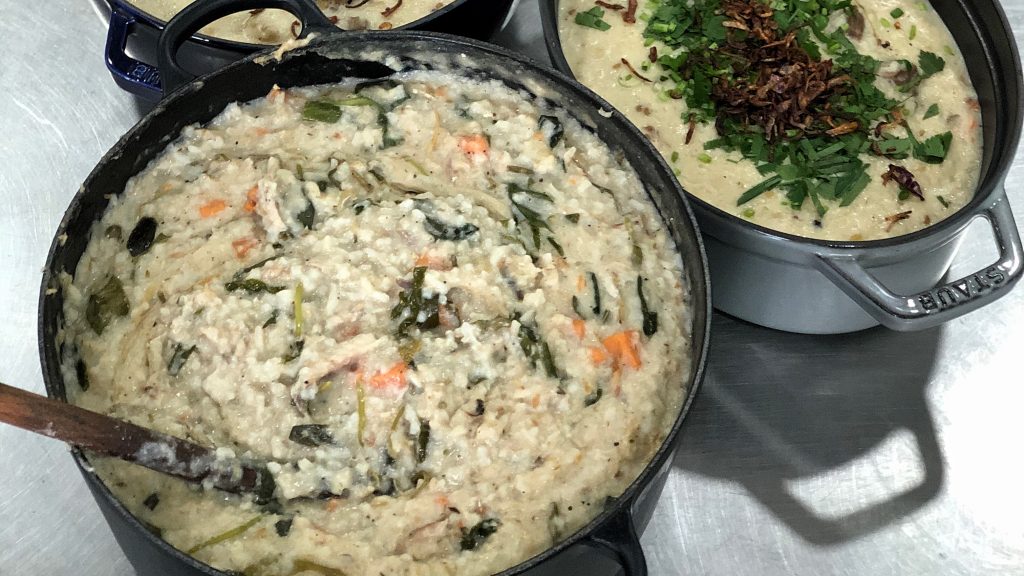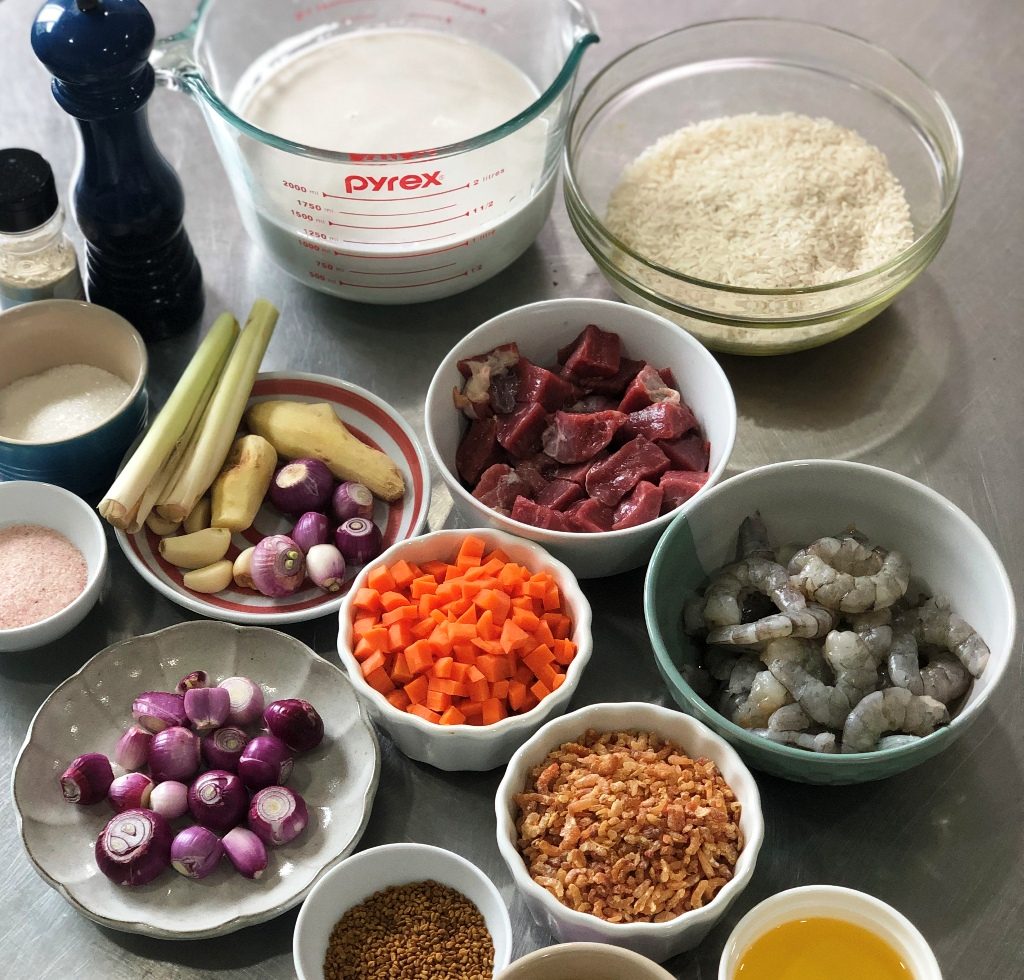
Bubur lambuk, congee, porridge, whatever you want to call it, is undeniably quite bland when compared to the other more vibrant and flavourful Malaysian dishes. However, we Malaysians don’t do bland food the way most people would. We like its subtleness of flavour but what makes a congee good or bad are the side dishes we pair it with.
Our fascination with side dishes goes back to the concept of ‘gu’. ‘Gu’ is basically about mix and match. You pair a main dish, for example congee, with 2 or 3 side dishes that have a very strong flavour like chillies, onions, pickled ginger and so on. These strong flavours will accentuate the lightness of the congee without overpowering the flavour of the other side dishes. In other words, the ‘gu’ concept is basically combining contrasting flavours to create a harmonious eating experience that you mostly find in Asia.
Bubur Lambuk Variations
Due to the difference in flavour palate and preference, our Malaysian bubur lambuk is not like any of your run-off-the-mill congee. I know you must be wondering how else we can make bubur lambuk interesting or even remotely unique? Let me tell you a story.
I grew up in Kedah and Penang, so I am used to the northern style of bubur lambuk. Imagine my surprise when I visited a mentor of mine whose mother-in-law is a true Terengganuan and served me their own version of bubur lambuk that is full of local ulam and pieces of fish! That was roughly 6 years ago. From then on, I discovered that there are more variations other than the Northern style of bubur lambuk.
Each one is different and special in their own way. The basis of making rice porridge, or congee (bubur nasi) is boiling 1 cup of rice grains with 4 cups of water over medium heat. What I later discovered was that the secret to a delicious bubur lambuk is that you need to add more water. Based on my experience, when making bubur lambuk, you must add 7 cups of water for 1 cup of rice grain used. If not, the congee will be starchy. That’s not what we want in a congee, right?
Bubur Lambuk Utara (Kanji)
In my 28 years of living, I have eaten so much kanji that I know the distinct taste by heart—the variation for kanji is in the filling, either with chicken or beef, sometimes with short ribs, but always mixed with prawns. But the best of all kanji is the one you get specifically during the month of Ramadan.
Its creamy, savoury rich flavour makes it one of the most delectable dishes you will enjoy after a full day of fasting. If you think bubur lambuk is boring, I think you should try out this recipe. I am serious. Let’s go to the kitchen and make some magical bubur lambuk!

Ingredients:
a) Congee
- 1 cup (200 gram) rice grain
- 7 cups (1500 ml) water
b) Flavourings
- 1 inch ginger, bruised or julienned
- 1 stalk of lemongrass, bruised
- 1 carrot, diced
- 200g tenderloin, minced (can be replaced with minced chicken or short ribs)
- 200g prawns (medium or large), skins and heads removed
- 1 cup of coconut milk
- 2 tablespoons of dried shrimp, washed and tossed
- 1 tablespoon of fenugreek (halba)
- 1 tablespoon of coarse black pepper
- 1 tablespoon of peppercorn
- 4 tablespoons salted radish, soaked, rinsed and diced
- 2 teaspoons of salt
c) To dry saute (tumis darat)
- 3 tablespoons cooking oil or ghee
- 8 shallots, thinly sliced
d) Garnish
- handful of Chinese celery, sliced crosswise
- handful of spring onion, sliced crosswise
Method:
- In a large pot, boil rice grains with water, bruised lemongrass, ginger, diced carrot and minced beef (or short ribs) until rice grains break down and beef are tender. Stir occasionally to avoid the rice from sticking to the pot.
- Pour coconut milk, dried shrimp, fenugreek and peppercorn and continue cooking the porridge over medium heat.
- Add prawns and salted radish. Season accordingly with salt and coarse black pepper.
- In a saute pan, sauté sliced shallots with oil or ghee until fragrant and browned. Pour immediately into the congee pot.
- Garnish and serve.
A Light & Easy Meal
So, there you have it! A bowl of feel-good Bubur Lambuk Utara that just hit the spot. I hope you have learned something about Malaysian congee or bubur lambuk today. I cannot even begin to describe the significance of bubur lambuk to Malaysians but through this recipe, you will be able to feel exactly what I meant by bubur lambuk as a light and easy meal.
If you love this Bubur Lambuk Utara recipe, feel free to share with me your favourite part of this recipe or the adjustments you have made to suit your palate. You can slide into my DM on Instagram or Facebook profiles. I would love to hear from you. Anyways, I will be back with more bubur lambuk variations, so stay tuned with me and Butterkicap.
